A monopod offers stability while being lighter than a tripod. It also leads to better portability. Learn about the best monopods to get sharper shots.
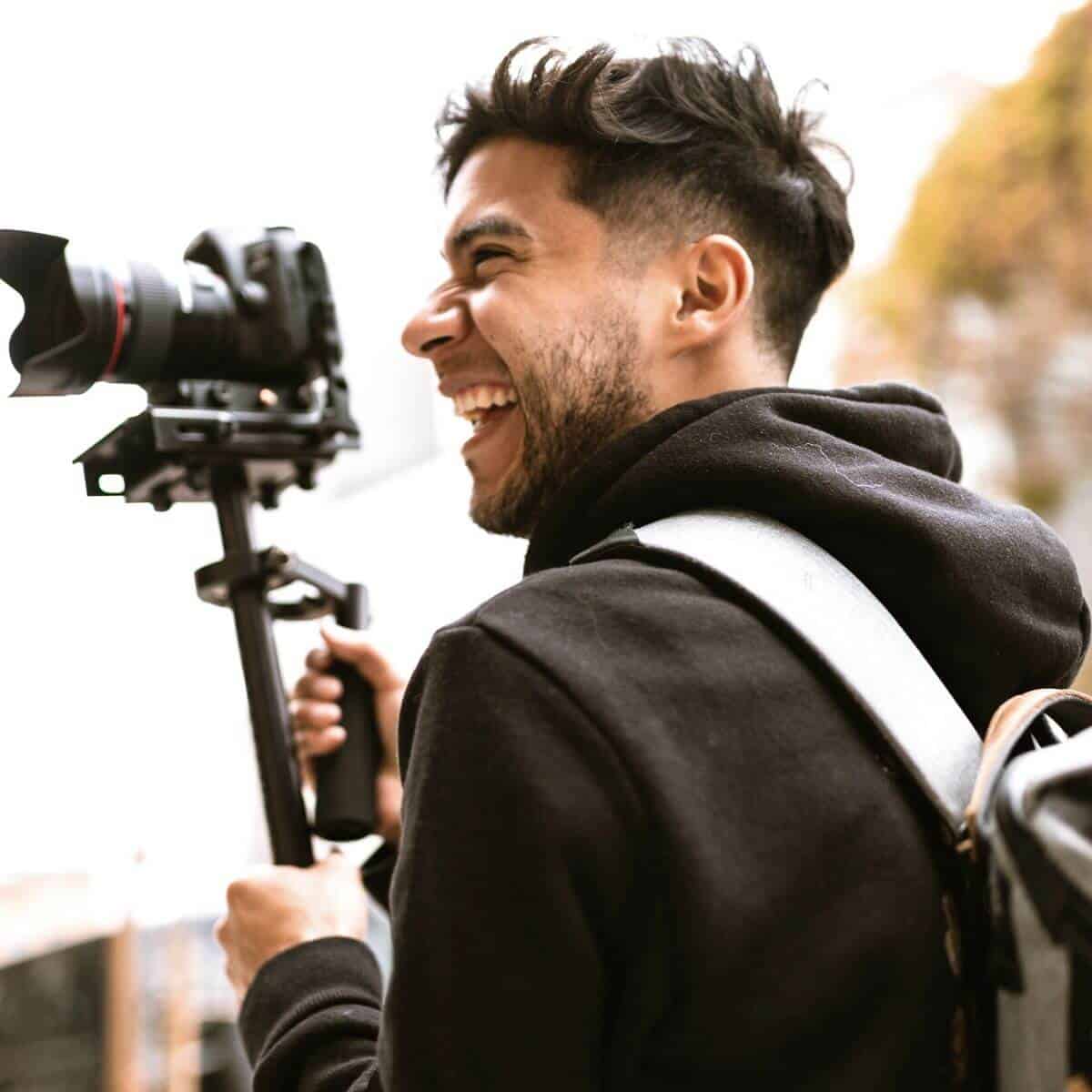
A monopod offers support and stability. It’s essential when using slow shutter speeds or heavy telephoto lenses.
A tripod can be bulky, heavy, and inconvenient. That’s why a monopod can be a better choice.
It’s not able to balance itself, but it allows you to stabilize the camera and move around.
It’s an excellent photography accessory. You can slow your shutter speed and reduce the effects of camera shake.
The following is your complete guide to the best monopods. You’ll also learn to choose the right one for your needs and gear.
The best monopods for cameras
A monopod has one leg that folds or collapses when it’s not in use. Different monopods have different features and capacities.
The following are the best monopods available.
Manfrotto Aluminum XPRO Monopod+
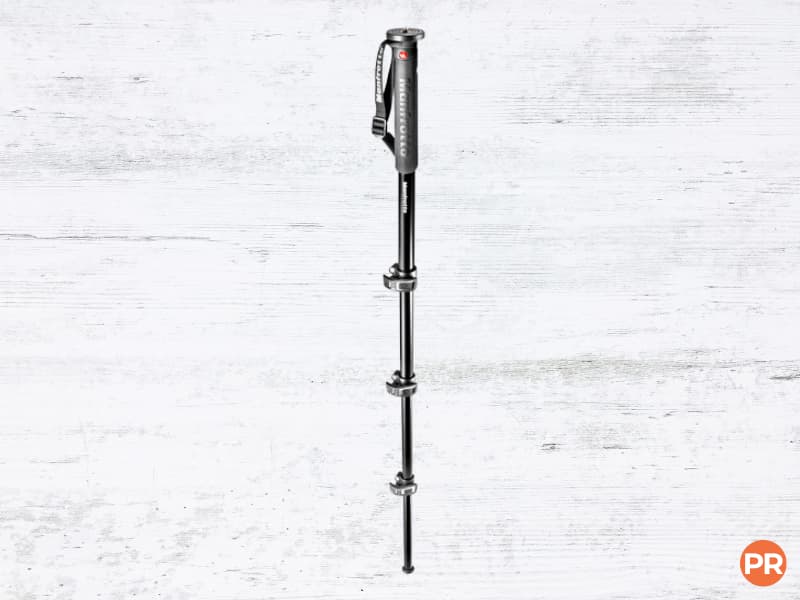
Features:
- Load capacity: 44.1 lbs
- Maximum height: 70.9 inches
- Closed length: 22 inches
- Sections: 4
- Weight: 1.65 lbs
The Aluminum XPRO Monopod+ by Manfrotto is one of the best monopods on the market.
It’s an excellent choice if you want stability while traveling light.
The Manfrotto XPRO Monopod+ weighs 1.65 pounds yet can hold up to 44.1 pounds.
The build quality is solid and sturdy. It can hold a heavy DSLR and telephoto lens.
The main drawback is that it’s 22 inches when you close it. It’s on the longer side when you compare it to other monopods.
Benro MSDPL46C SupaDupa Carbon Fiber Monopod with Leveling Pan Head (62″)

Features:
- Load capacity: 70.5 lbs
- Maximum height: 62 inches
- Closed length: 19.1 inches
- Sections: 6
- Weight: 2 lbs
Benro is a top brand for photography supports, like tripods and monopods.
The SupaDupa Carbon Fiber Monopod is one of the most expensive options. But it’s sturdy, lightweight, and ideal if you’re a serious photographer.
The monopod can hold up to 70.5 pounds and collapses to 19.1 inches.
It also has a rotating foot that makes panning movements smooth and easy.
The monopod also has a leveling pan head, making adjustments straightforward and quick.
Get the Benro SupaDupa Carbon Fiber Monopod if you have the budget for one that’ll last a long time.
Gitzo GM4562 Series 4 Carbon Fiber Monopod

Features:
- Load capacity: 66 lbs
- Maximum height: 60.6 inches
- Closed length: 17.3 inches
- Sections: 6
- Weight: 1.5 lbs
Gitzo’s Series 4 Carbon Fiber Monopod is the gold standard for compact monopods.
It’s one of the best monopods because it’s lightweight, sturdy, and reliable.
The Series 4 Carbon Fiber Monopod collapses to 17.3 inches. Not only is it compact, but it’s also excellent for shooting in low positions.
The Gitzo monopod can support up to 66 pounds. It’s one of the sturdiest and most compact monopods available.
3 Legged Thing Trent 2.0 Magnesium Alloy Monopod
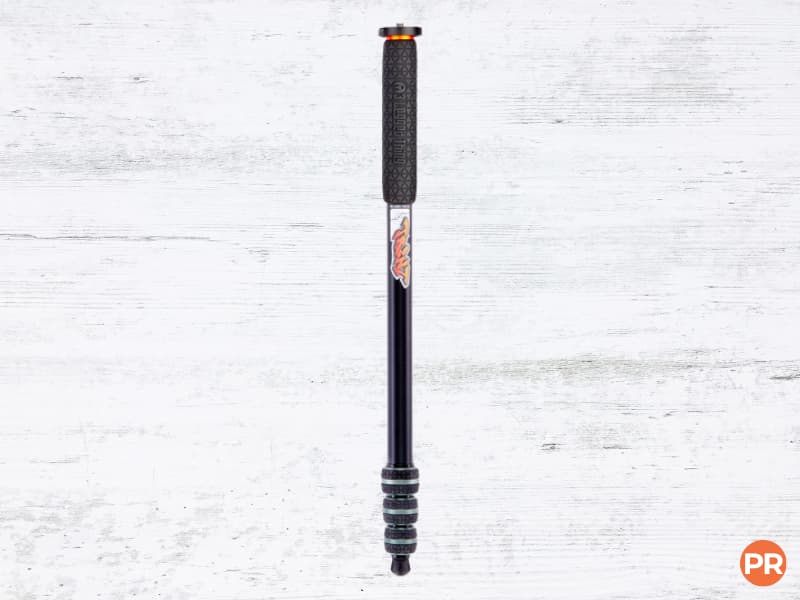
Features:
- Load capacity: 66 lbs
- Maximum height: 79.5 inches
- Closed length: 25.8 inches
- Sections: 4
- Weight: 1.6 lbs
The Trent 2.0 by 3 Legged Thing is one of the longest monopods you can buy.
It extends up to 79.5 inches tall, weighs 1.6 pounds, and can support up to 66 pounds.
Also, the monopod is under $100. It offers the support and height of more expensive monopods.
A drawback to the Trent 2.0 Monopod is the length when you collapse it.
At 25.8 inches, it’s one of the least collapsible monopods.
Sirui P-326 Carbon Fiber Monopod
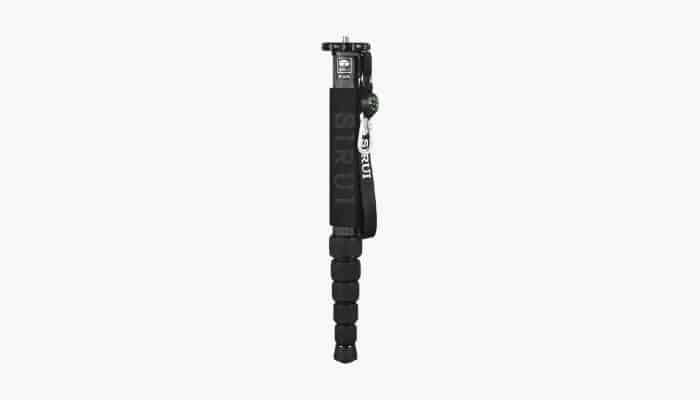
Features:
- Load capacity: 22 lbs
- Maximum height: 61.4 inches
- Closed length: 15.6 inches
- Sections: 6
- Weight: 0.9 lbs
The Sirui P-326 Carbon Fiber Monopod is a compact and sturdy choice.
Its load capacity is 22 pounds, meaning it can hold most camera and lens combinations.
At under $100, the Sirui P-326 monopod offers outstanding value.
The monopod has a hand strap to enhance your experience using it. Also, it has a carabiner clip to attach the monopod to your camera bag.
It collapses to 15.6 inches. So, it takes up little space, making it packable and concealable.
Oben ACM-2400 4-Section Aluminum Monopod
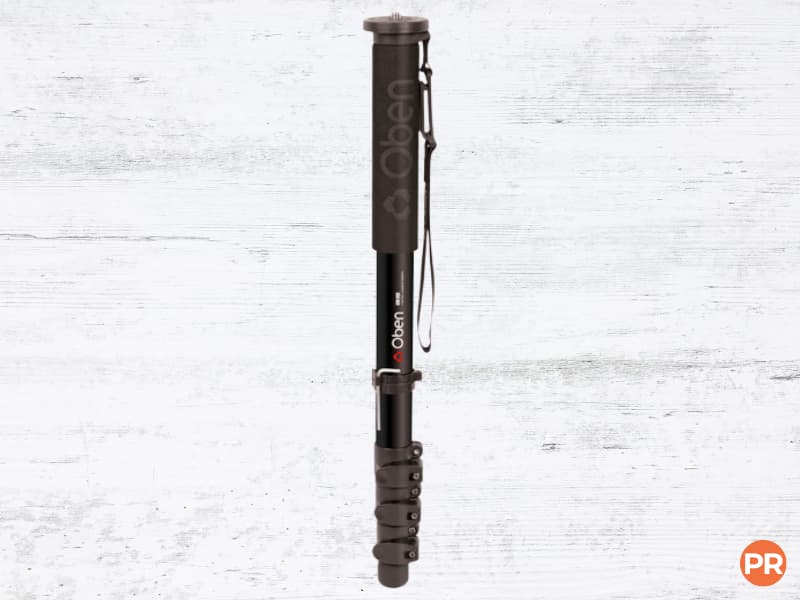
Features:
- Load capacity: 26.4 lbs
- Maximum height: 63.2 inches
- Closed length: 21.3 inches
- Sections: 4
- Weight: 1.65 lbs
Oben offers one of the most popular and best monopods. The 4-Section Aluminum Monopod is sturdy and inexpensive.
The load capacity works for most camera and lens combinations. Also, the height capabilities are comfortable for most photographers.
It’s not the lightest monopod for its load capacity and height. But, it remains an excellent choice for beginners.
Amazon Basics 67-Inch Monopod
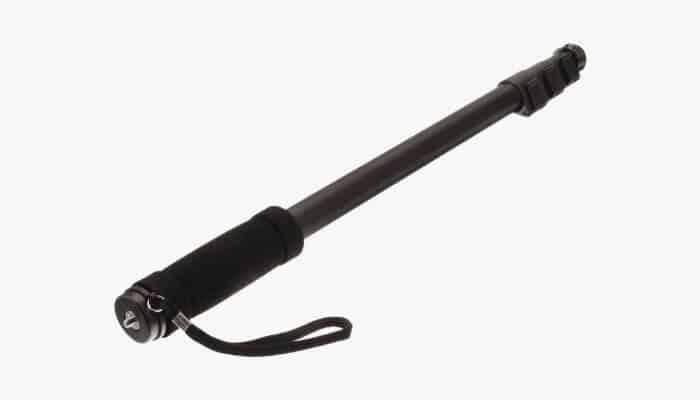
Features:
- Load capacity: 6.6 lbs
- Maximum height: 67 inches
- Closed length: 21.4 inches
- Sections: 4
- Weight: 0.98 pounds
Get the Amazon Basics 67-Inch Monopod if you want an inexpensive one.
It weighs less than a pound, making it light and easy to pack.
You can stabilize your camera and move around without noticing the monopod’s weight.
The main drawback is the load capacity. It can only hold up to 6.6 pounds.
It’s best for light cameras and lenses.
How to choose a monopod
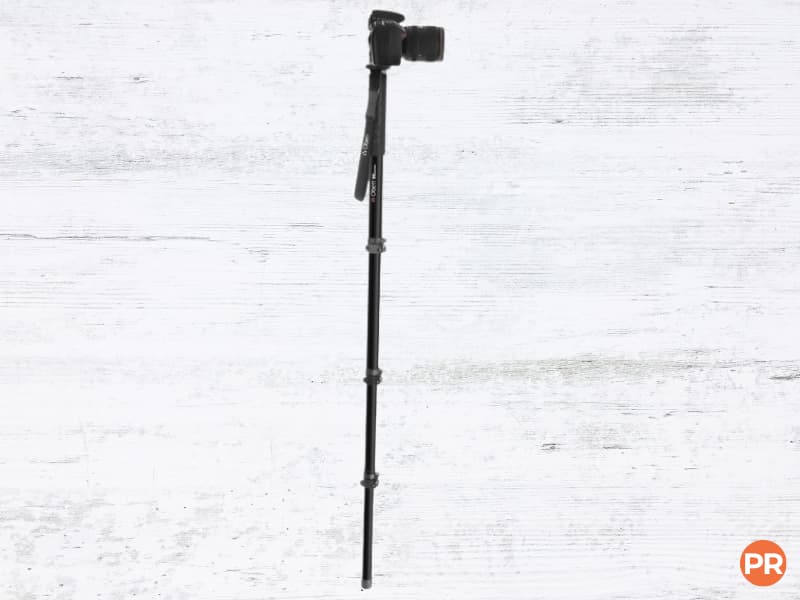
There are several factors to consider when deciding between the best monopods.
First, consider the height of your ideal monopod. It must feel natural and comfortable when using it.
Next, think about the weight of your gear. The monopod must support your camera and lens without causing the camera to shake.
Aluminum and carbon fiber are lightweight and sturdy materials. Look for a monopod made with one of the two materials to ensure quality.
The feet are another essential aspect. A round foot or flip-out feet offer tripod-like stability.
Knowing what to look for in a monopod allows you to buy one that takes your photography to the next level.
Frequently asked questions about monopods
What’s better, monopods or tripods?
Monopods and tripods serve the same purpose, stabilizing your camera and lens. The difference is the number of legs. A monopod has one leg, meaning you must hold the camera to use it. A tripod allows you to take pictures without holding onto it. But, moving a tripod or traveling with one has its challenges. Portability is where a monopod thrives. So, the best one depends on your needs. Choose a monopod if you want flexibility and portability.
Are monopods worth it?
Monopods are worth it. They stabilize your camera without taking up much space. You can use slow shutter speeds without worrying about blurry results. The support also makes it easier to carry your camera and lens.
Can I use a monopod as a walking stick?
Aside from taking sharp pictures, monopods can serve as excellent walking sticks. Avoid putting all your weight on the monopod to prevent damaging it. But, it can offer great support when walking.
Conclusion
Tripods get most of the attention for stabilizing cameras. An excellent alternative is monopods.
They’re more portable and stealthy while allowing you to capture sharp photos.
Consider your budget, gear, and dimensions when deciding between the best monopods.
By using one, you can have a steady camera in all situations.
Related: What’s Secondary Sunset in Photography?
Featured photo courtesy of Unsplash.
